Here we are, now well into the third month of self-isolation, wearing our masks like good citizens if we go out at all, minding the headlines and the barrage of information, and perhaps generally adjusting to a global catastrophe whose true measure will not be known for years. Some artists spent the first few weeks of the pandemic in a state of shock or inertia; others seemed to revel in the abundance of newfound studio time. But if the numbers who responded to my shout-out for responses is any indication (there will be a Part 3….and who knows what beyond that), almost no one remains unchanged by this unsettling era in global history.
Saya Benham: My new works are imaginary interpretations of the Persian, Zoroastrian, and Avestan myths. Divs, Daeva, and Dews can be translated to represent demons, a particular form of supernatural entity with disagreeable characteristics. They are divinities that promote chaos and disorder, and are personifications of every imaginable evil found in later traditions and folklore. Divs still exist in our modern life as new forms or concepts, such as in biochemical, scientific and technological weapons, as battles for power and ego, or even within the dark shadows of our own soul.
Talismans are objects marked with magic signs and believed to confer on its bearer supernatural powers and/or protection. A modern translation of Talismans can be found in; numbers, binary codes 01, technology and scientific signs and more.
All the colors I have used in these works are obtained from either hibiscus flower, turmeric, saffron, and earth pigments. These elements that I’ve extracted from nature and turned into pigment, through the process of art can now serve as a positive natural creative force, to assist in combating the Divs of today.
Julio Valdez: Art is keeping me sane! After the first three weeks of seeing the disastrous way the stable genius was making everything worse, I needed to come back to my art to make sense of it.
A dear friend recently lost one of his twin dogs in a fire in his studio. After I made a painting of his beloved hound, I imagined the dog actively chasing a virus away. The idea just happened very spontaneously as I was drawing.
Ana Rendich: I am finishing works that had to be reworked several times because of issues with the medium. When one is worried that a loved one can get this virus, it affects the rhythm of the heart and soul. I am here, truly waiting for the future to arrive, to see how we heal from the impact of so many human losses.
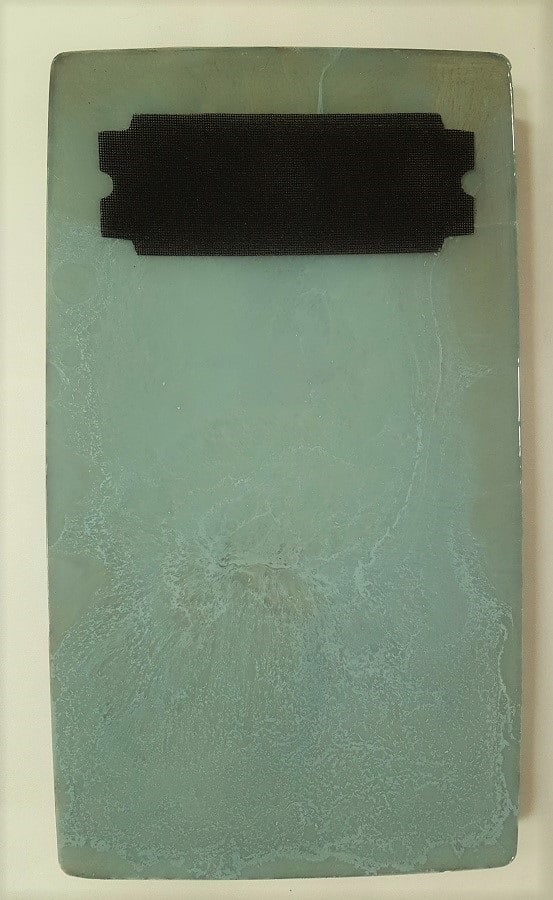
Ana Rendich, When the Soul Trembles (2020), oil, drywall, sanding screen, and resin, 24 by 14 by 2 inches
Dellamarie Parrilli: As artists we are used to being alone. I looked around my loft apartment, and asked myself, What do I have? What can I use? I found some paper and ink, and the energy flowed so that in a short time I had 33 pieces finished. I work from sources within and am interested in exploring “interiors”—emotional, spiritual, and psychological. I am inspired by the realm of the subconscious, including the spiritual, combined with a modern approach and preoccupation with psychology and introspection. I am drawn to that which establishes the continuity of existence and drives on toward the truth and totality of experience, engaging the senses while allowing the exploration of the viewer’s own inner reality.
Sandra Filippucci: I doubt I would have made a piece like this in calmer times. I also doubt I would have thought of punching holes in Joan’s armor. The holes are the pores that the virus gets through, and it’s symbolic of our vulnerability. Most of us have no armor, and armor would not be of much use against the tyranny of this tiny thing. And, curiously, Joan was shot with an arrow through her armor into her shoulder. In the end, it’s about fierceness, not armor.
Nancy Natale: At first I felt kind of dumbstruck when the shutdown happened since I was not used to making work that was not intended for sale. I had a hard time working in the studio, but gradually I resumed some earlier experimental work with raw canvas painted with encaustic and acrylic, plus cardboard and paper that I crushed, manipulated, and painted. My collage, or bricolage, technique of attaching elements to panels with tacks is the same as that intended for corporate sales, but the attitude is less formal and more precarious. I have only made three works since the shutdown, but I think they are stronger and more expressive of my state of mind.
Rashelle Weissenbach: Making artwork is a natural response for me to any significant emotion I experience. The painting process becomes a liberation from stress, anger, fear and uncertainty. The social isolation is not as uncomfortable for me as I tend to retreat to the studio during anxious situations, and we can still connect virtually. I have overwhelming empathy for the suffering and hardship I witness within our nation. Color and texture work together to illustrate my prayers and work through these uncertainties onto the canvas in a cathartic release.
Ira Wright: Insidiously—that’s how the change arrived—and now all seems different and yet it isn’t quite. On one hand, it seems as if the ovens at Auschwitz and Sobibor have been reignited as the dead count rises relentlessly, and on the other, birds sing in a sky shimmering in a new kind of blue.
The life source, Nature, has introduced us to a new creation. Perhaps she has had it with us and our concrete warrens, our machines coughing out the fumes of dead dinosaurs, our midden heaps as big as islands.
Artists are lucky, we still have something to do: squeezing out our feelings about this with our tubes of paint.
Teri Donovan: When I am alone in the studio, thoughts of coronavirus push aside planned projects and seep stealthily into images meant to be something else. These small works are the result of the virus appropriating life and art. They are vignettes that speak to the daily struggle of preventing and combating the possibility of being overtaken.
The women in these paintings mirror the real world in this pandemic, where a significant portion of the physical and emotional work falls to them, whether it’s in the home or in low-paying workplaces such as nursing homes and hospitals.
Their efforts range from eagle-eyed detective work in purging potential hazards to daily sanitizing of virus-prone surfaces to juggling worries and fears about the invisible invasion. All their activities are focused on hopes of escaping Covid-19’s clutches despite the onslaught of probability.
Cydney Taylor: I seem to be really busy with experiments. So this, which I could call “Little Idea,” is an experiment complete with a mistake, which I am delighted with. Isolated in my studio, I really have no audience in mind, except maybe Paul Klee and Giorgio Morandi … oh, and a few others, but they’re so beyond, in so many ways, that I feel very free. I even spend hours a day studying astrology and washing the studio floor, oblivious to the call to produce. Reflection is coming more and more easily, with less and less criticism. I wonder how we will begin again, when this breakdown of old systems has finished its reign of terror.
Top: Julio Valdez, Pandemic Self-Portrait, oil on paper, 11 by 14 inches
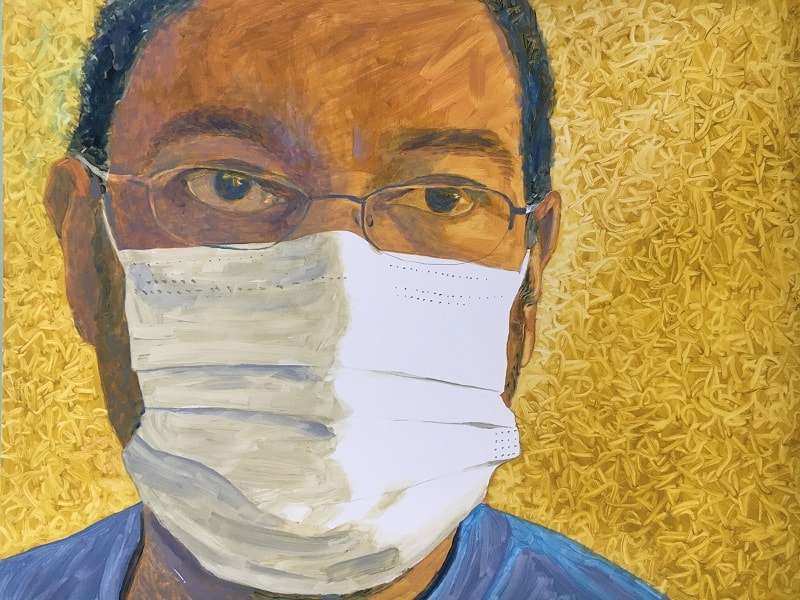
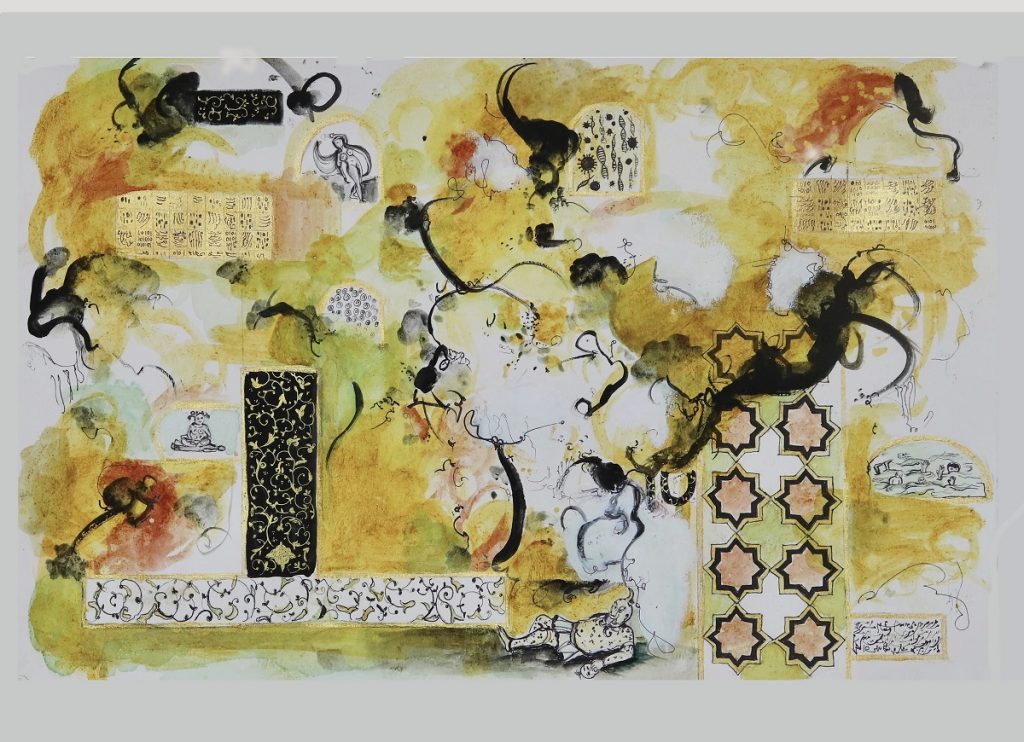
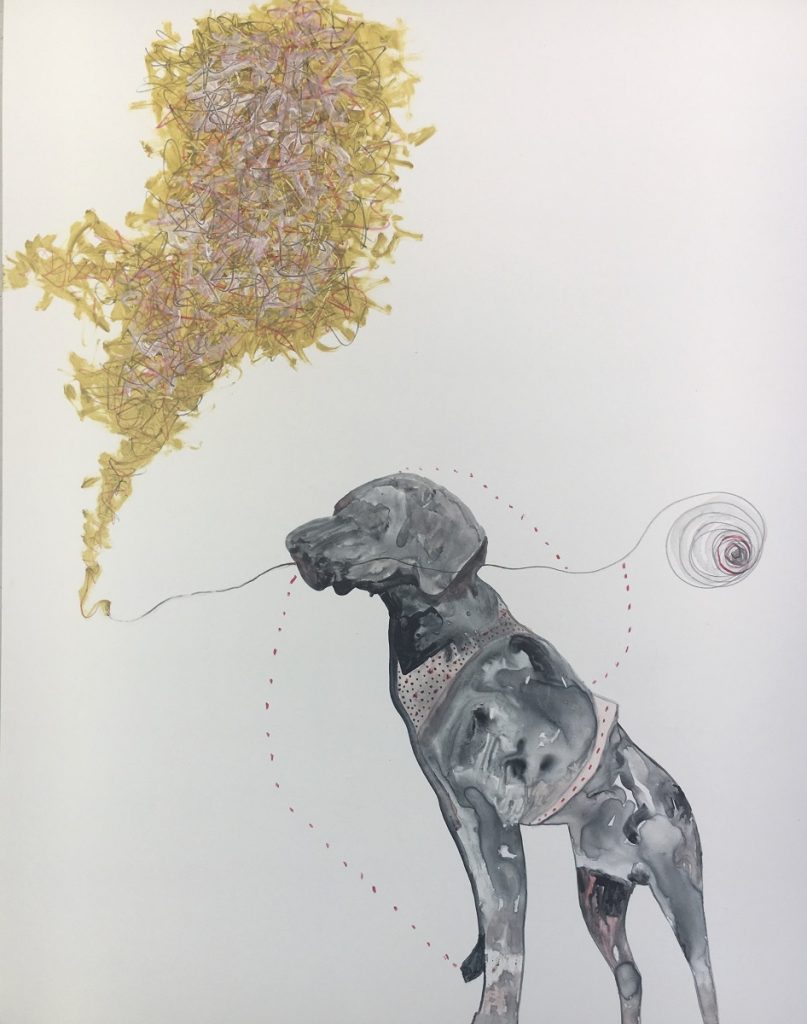


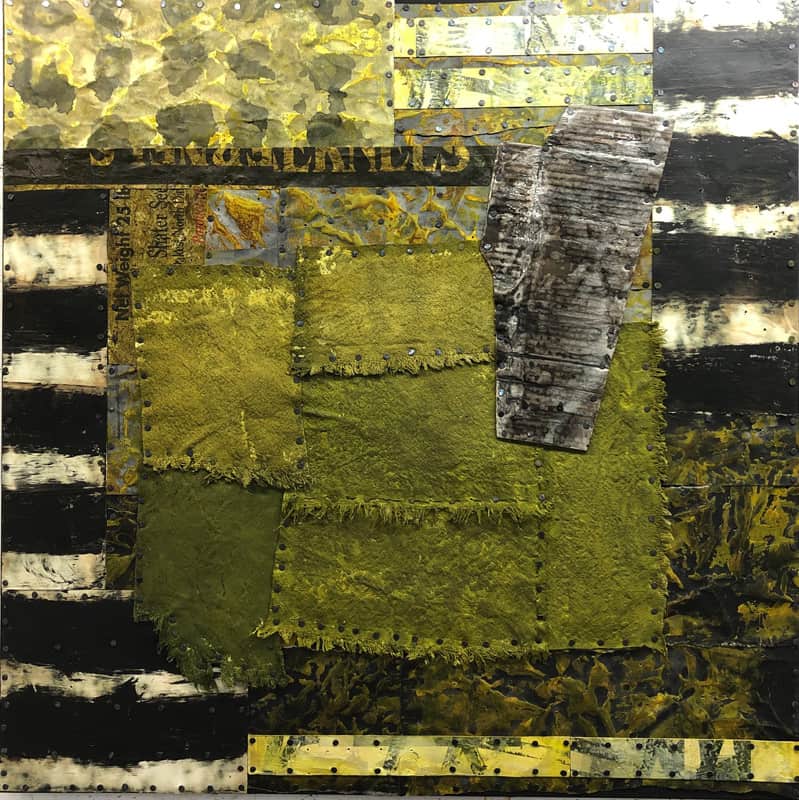
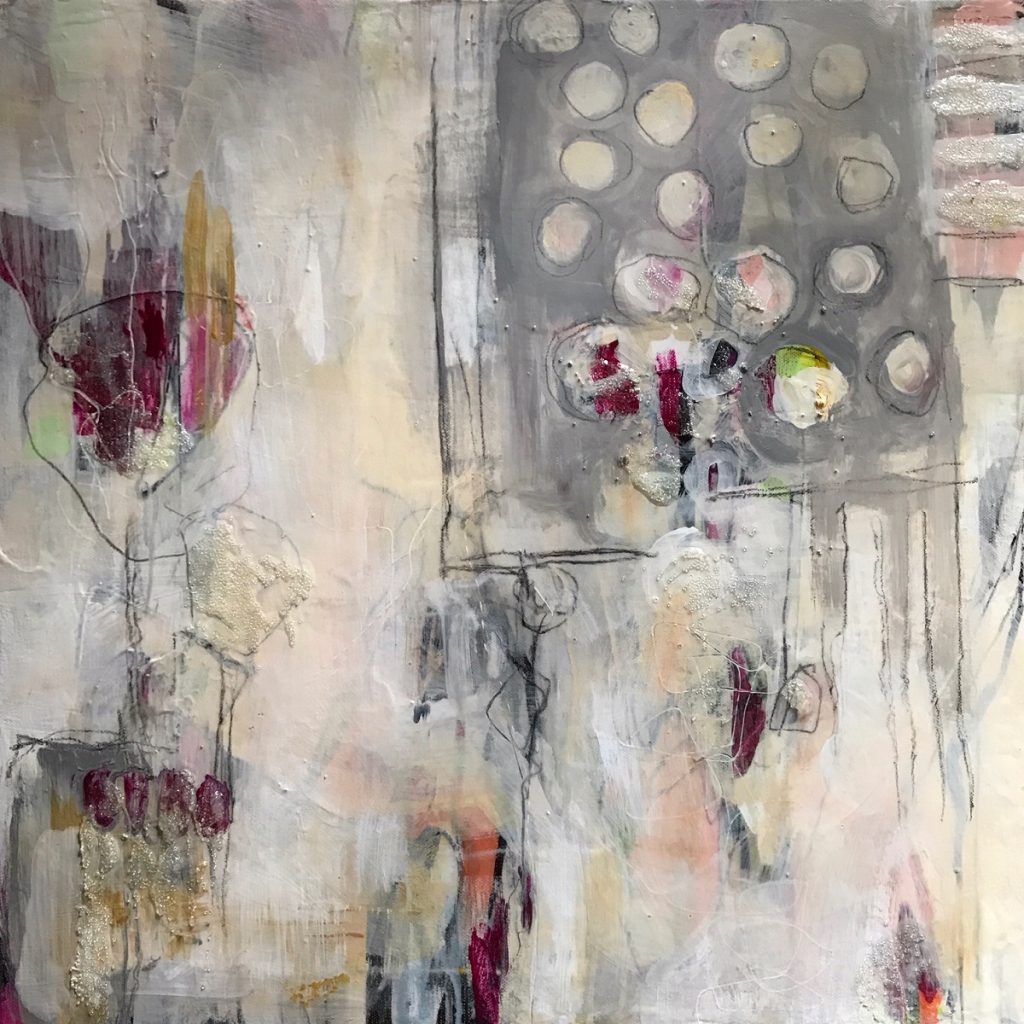
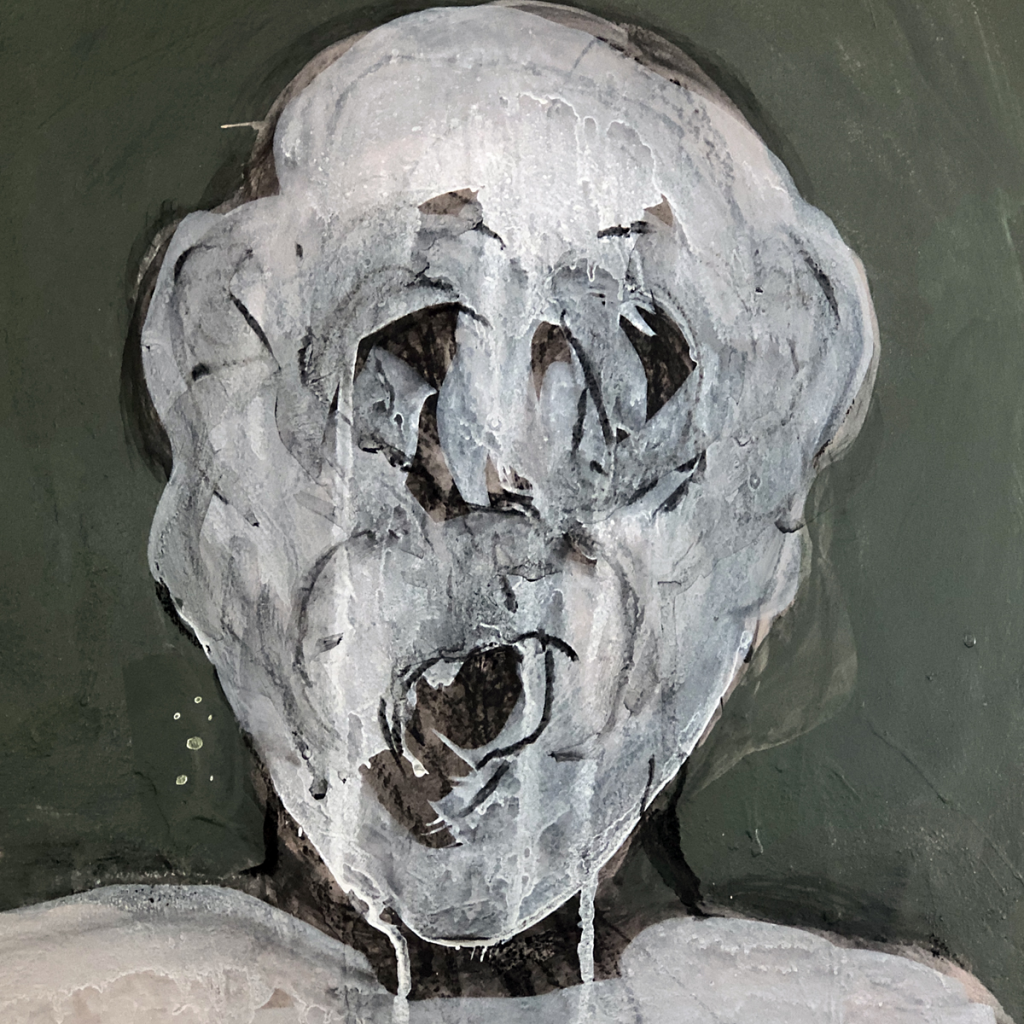
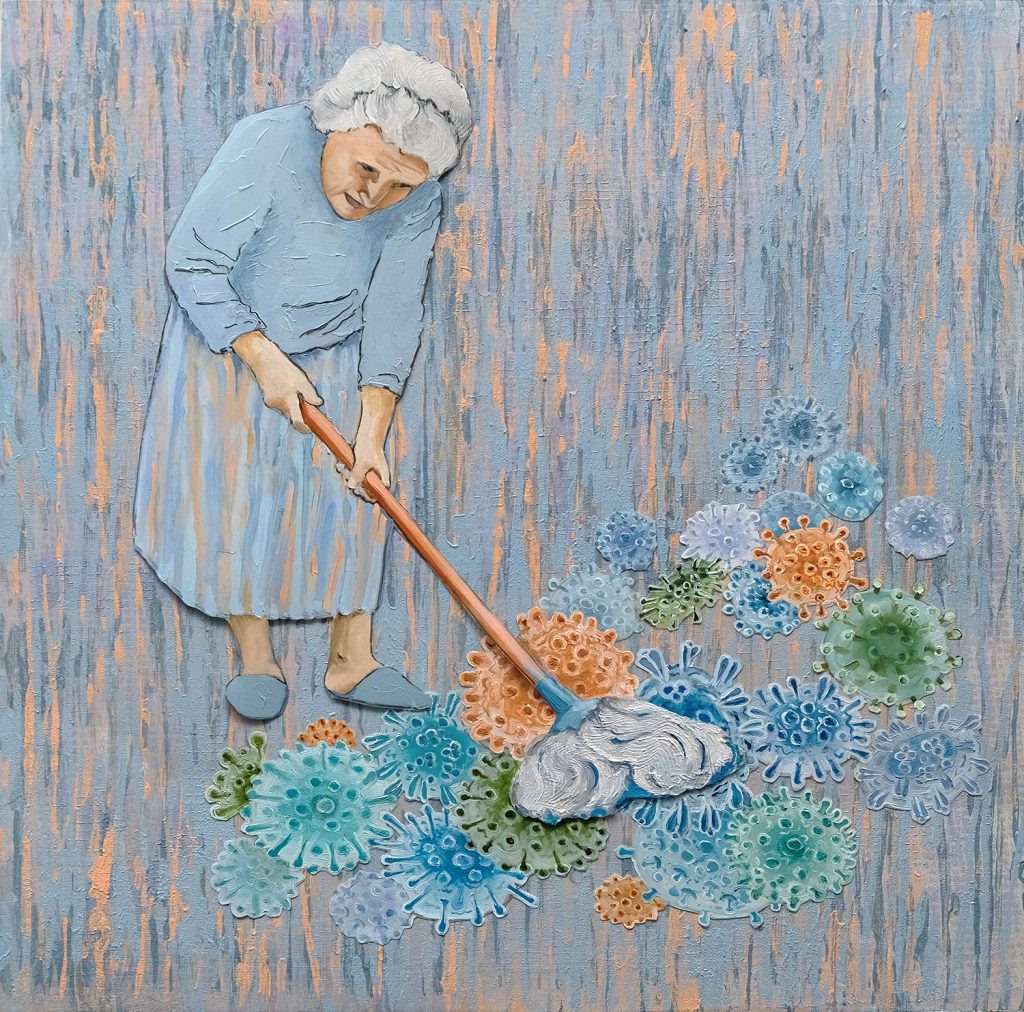
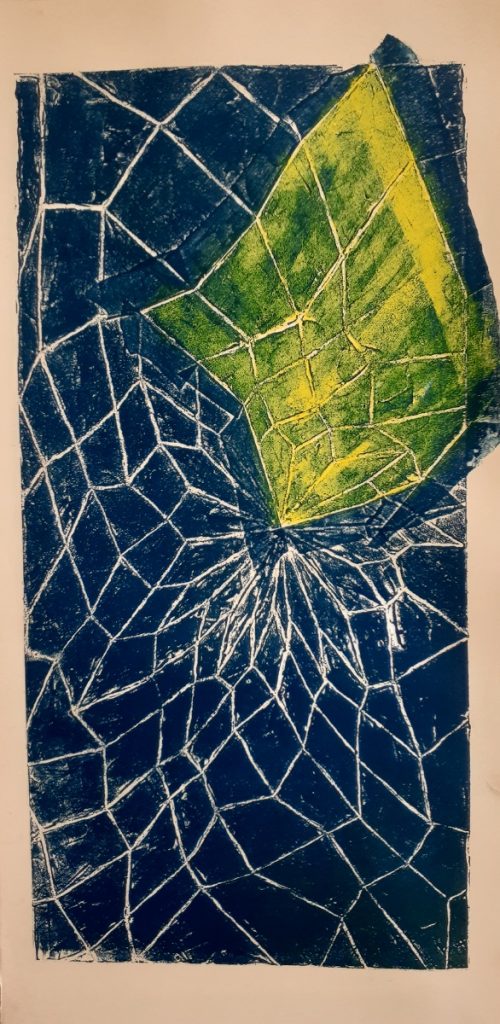
Once again, packed with so much good stuff. Thanks Ann!